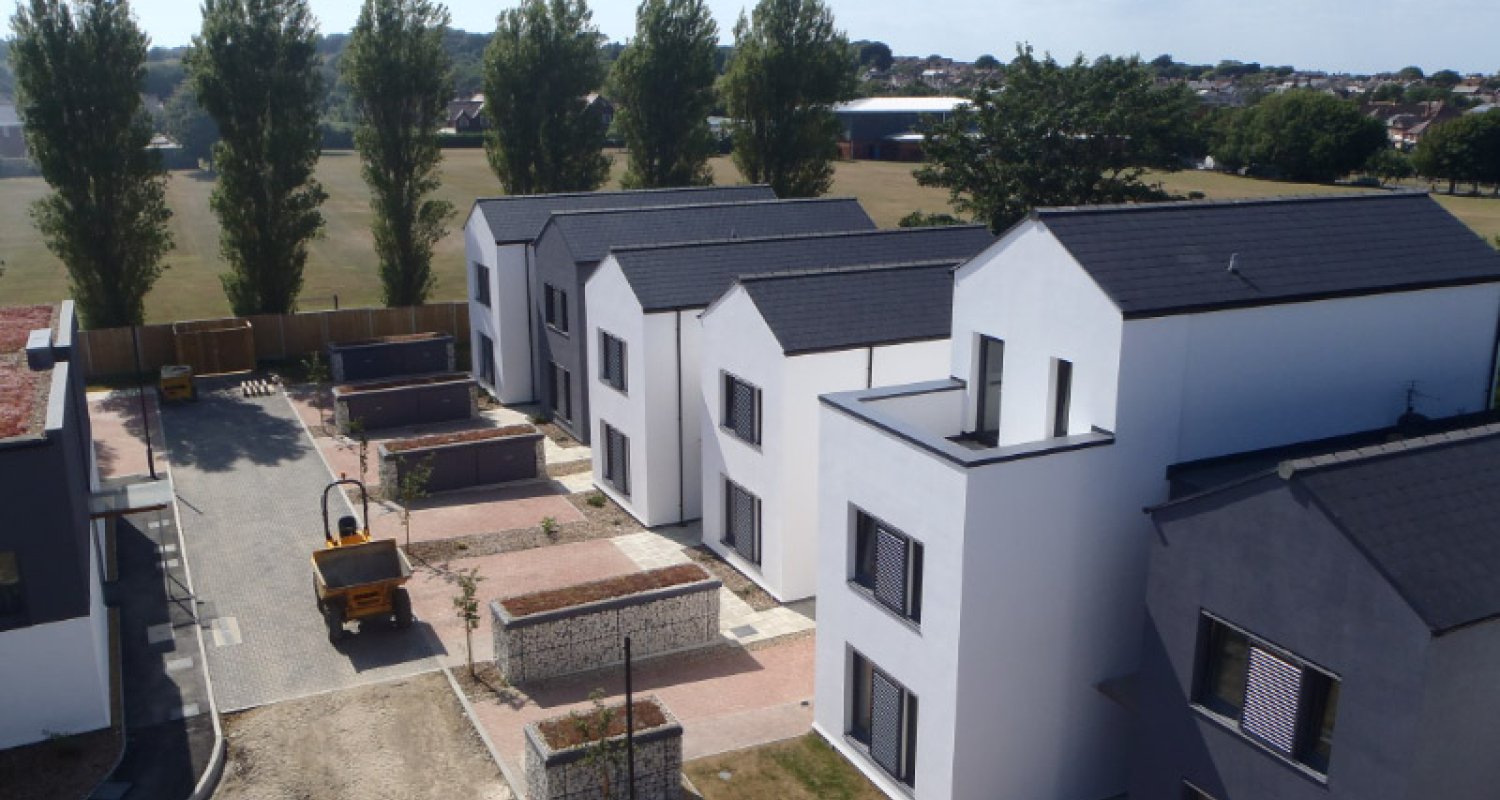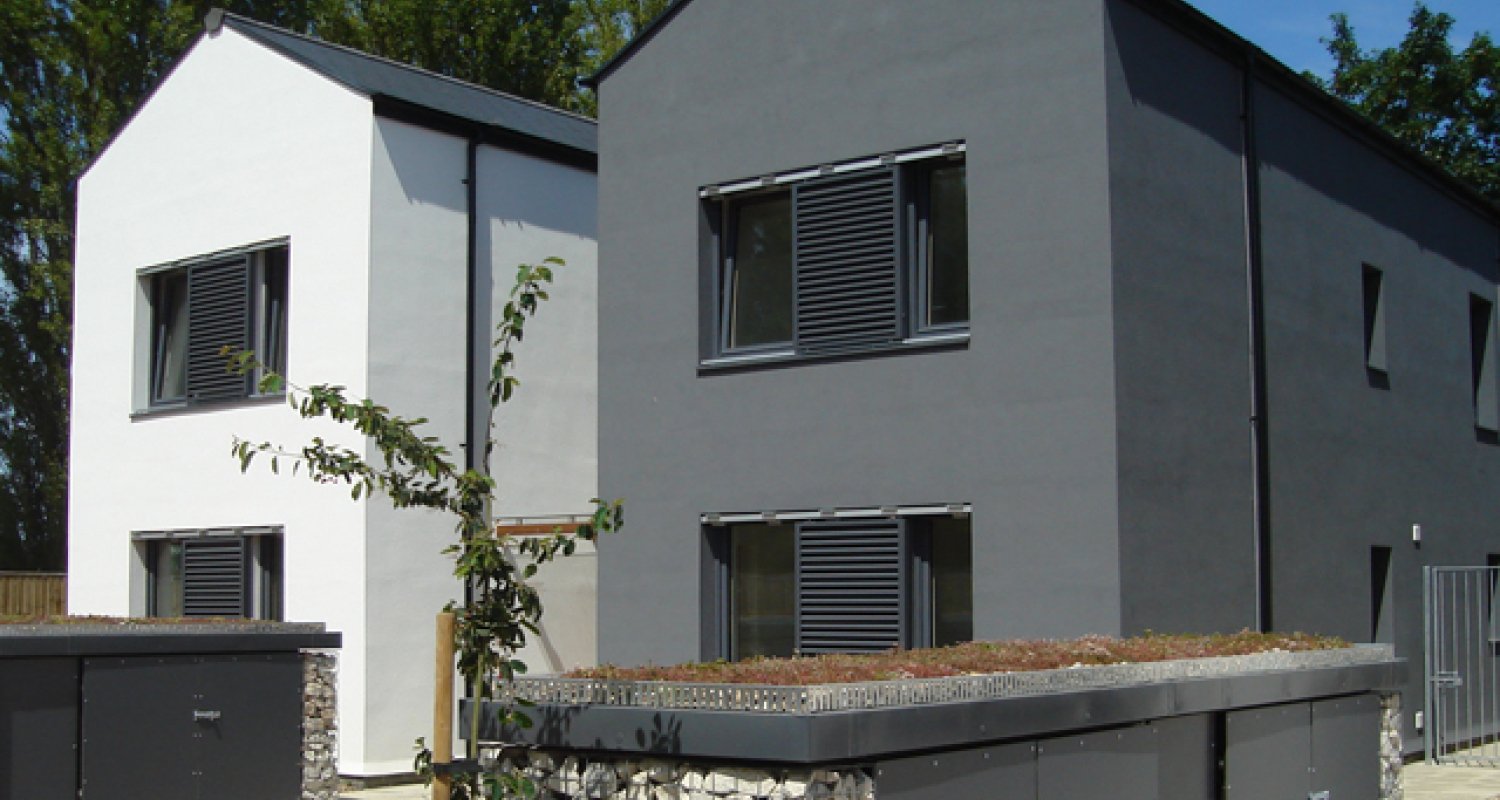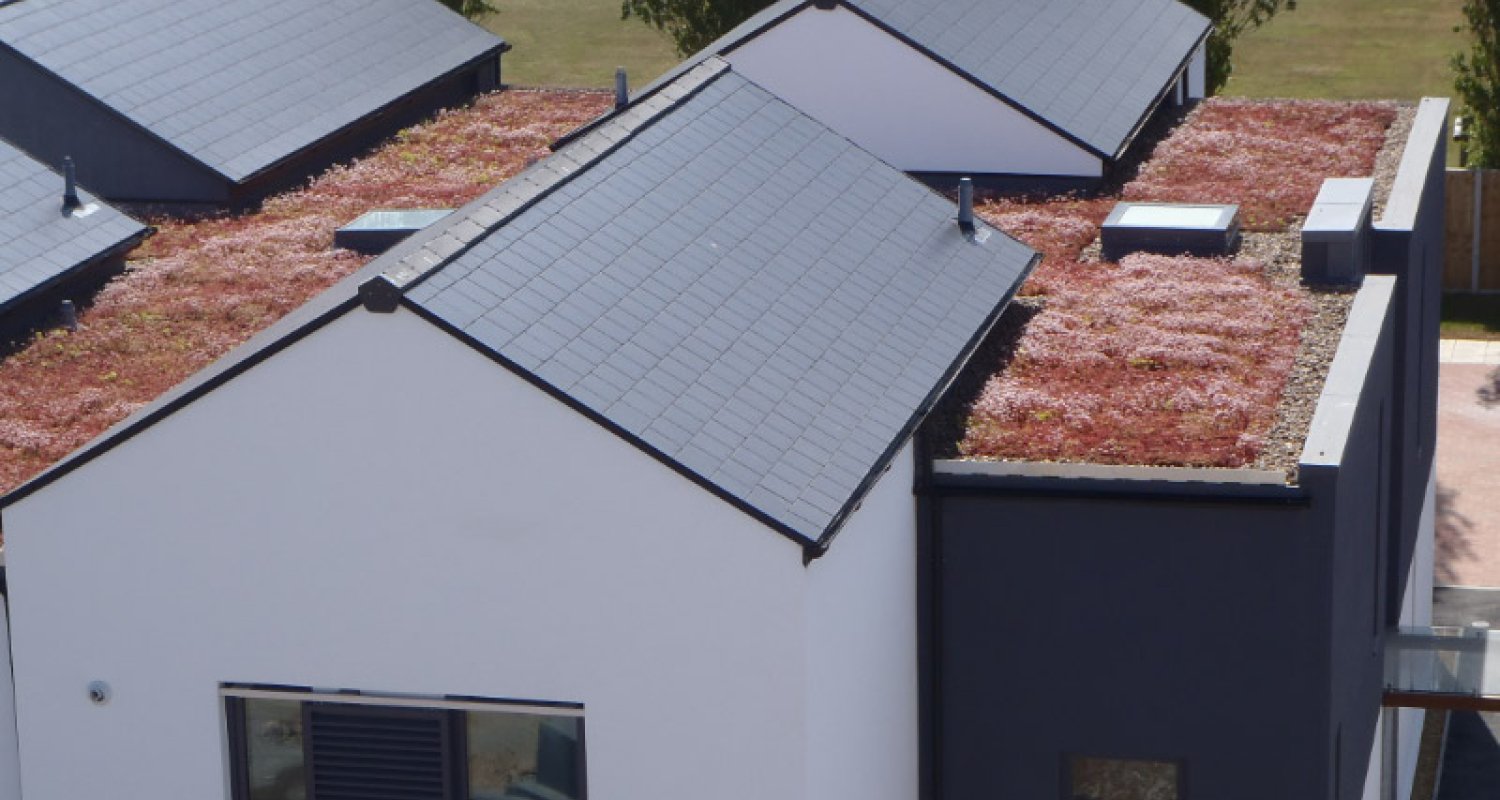The Cameron Close development on the Isle of Wight, comprising 16 semi-detached houses and 12 sheltered accommodation apartments, was built to Passivhaus standards using H+H’s Thin-Joint blockwork.
The scheme’s developer, Southern Housing, wanted a scheme to meet the low energy criteria defined in the higher levels of the Code for Sustainable Homes without having to rely on renewable technologies. The fabric first, low-energy approach embraced by Passivhaus met this criterion.
Although the environmental benefit was a factor behind the decision to build to Passivhaus standard, Southern Housing’s key motivation was to keep its residents’ bills down. As a landlord relying on rental income, Southern Housing hoped that helping residents spend less on their energy bills would, in turn, help avoid situations where tenants might default on their rent.
But has it worked? We revisited the scheme eight years on to find out.
The landlord’s view
We spoke to Jack Ostrofsky, then Head of Design and Technical at Southern Housing who told us: “It has been a phenomenal success because residents aren’t spending any money on heating their homes. People have been telling us they haven’t turned on their heating all year, and that’s a regular occurrence. “Key to the Passivhaus methodology is taking a fabric first approach. What does that mean? It means thicker walls, higher performing walls and airtightness. Aircrete is a great example of having your masonry load bearing walls add to the insulation that you need to achieve this particular standard.”
So, the housing developer’s objective of lowering residents’ heating bills has certainly been successful. But how do the houses perform when the weather warms up? Jack explains: “There’s a myth about passive homes which is that because they’re warm in the winter you’d think that in the summer they’d get too hot, however, the insulation keeps the temperature stable. “The homes have a passive stack approach, so opening windows on the upper floors lets the hot air go out and brings cooler air from inside the house and circulates it that way.”
The tenant’s opinion
We asked Laura Norris, a Southern Housing resident, how she finds living in her Passivhaus. She commented: “I would recommend living in a Passivhaus. My heating bills have been amazing, especially in this current time. I haven’t had to increase my direct debit at all to cover the rise in the cost of heating. It does make a big difference. It’s cheaper to live here, it’s comfortable and it’s quiet – I don’t hear any of the neighbours.”
The construction
The external walls of homes on the Cameron Close development are constructed from H+H’s 200mm thick thermally efficient Celcon Plus blocks. These are enhanced externally by an additional 230mm thick layer of phenolic insulation on the houses and 150mm thick layer on the apartments. The insulation is finished externally with a white-colour acrylic render system, a common aesthetic on the Isle of Wight. The solution gives a U-value of just 0.08W/m2K for the external walls of the houses and 0.11W/m2K for the apartment walls.
In this video, the Head of Design and Technical at Southern Housing and a resident discuss their experiences of managing, and living in, the Passivhaus homes and the benefits of Passivhaus masonry construction for residents and housing associations.




